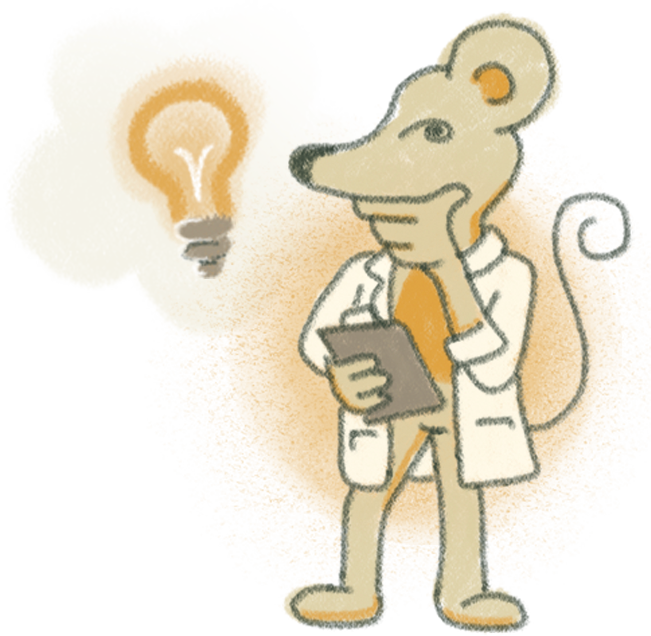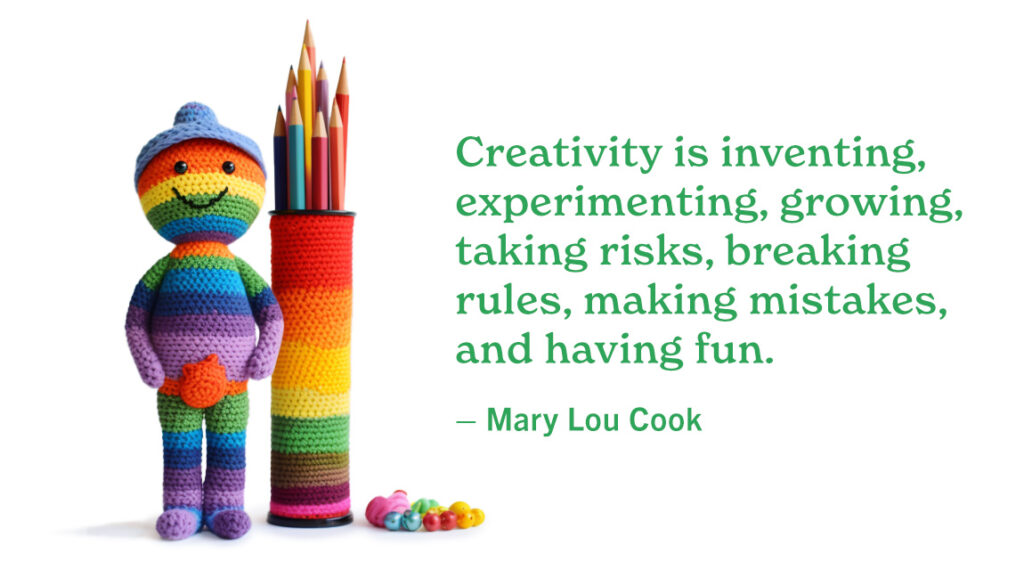Test Your Brand’s Strength
Successful companies are built on strong brands — take our new test to find out how yours measures up!

As a team working on a myriad of design disciplines, we face daily challenges such as: How can we continually design high-quality solutions our clients need? How can we reduce the size of that enormous file? How did AI do that??!?!?
Some of these questions are easier to answer than others, but one of the toughest challenges is figuring out where the heck inspiration even comes from (and how can I get more of it??).
Inspiration and creativity are enigmatic ideas not easily harnessed or fully understood. Every creative seeks the fountain of inspiration, and while we don’t have all the answers, we are believers in the art of consistent practice.
Below are four methods to invite inspiration into your creative practice, whether you’re a professional design team or a solo creative.
The biggest thief of inspiration is rigidity. It’s hard to be creative when the constant ticking of the clock drowns your inspiration or the voice of critique cuts in too early. To combat the anxiety, we developed a creative process that welcomes open space, play, and hospitality towards “bad ideas.”
Finding room to frolic within a project timeline can be difficult though. In the midst of expectations and deadlines (which aren’t bad things), we create that space by building efficiency into areas of our process that aren’t dependent on ideation — for example, planning for the known variables ahead of time, identifying patterns and creating templates for repeatable tasks, swapping the order of milestones, etc.
A creative project timeline provides flexibility, and by following this philosophy, we are able to double (or even triple) the time allotted for concepts and research compared to a rigid linear process.
To stimulate new ideas, we sometimes formulate wacky design prompts that force team members to look at the project from new perspectives. Questions like, “If you pick another creative field (fashion, robotics, embroidery, soup labels, architecture, landscape design, latte art, etc) and combine parts of that medium with an item from your project, what would it look like?”
We also schedule biweekly team-wide show-and-tells that celebrate progress, not just the final product. Presenting our work to team members that aren’t familiar with the project requires us to rehash ideas, which can uncover new connections we might not have considered before. This practice also grants us time away from our computer screens and invites conversation and input so that we might find inspiration in the environments and people around us. Which brings us to our third tip.

Creativity tends to strike most often during moments of quiet reflection and observation. We nurture this aspect of our creativity by putting ourselves in environments that coax our attention away from noise and distraction, and back into the present.
Our office is located in an easily walkable neighborhood of DC, also conveniently situated near a beautiful monastery garden and several parks. Indoors, we repurposed a room in the office to become what we now call the “quiet car.” Anyone can go there to sit on a comfy couch, enjoy the silence, wonder aloud, draw, read, and think in an isolated space where inspiration can whisper to us more clearly. What makes this effective for us is the opportunity to switch up our environment, so whatever environment you typically work in, try the opposite for some time and see if it helps!
One of the best ways to jumpstart inspiration is to look at something you’ve never seen before. At openbox9, we collect books that provide hyper-focus on a unique creative topic every month. For example, last month, we ordered a book on optical illusions in graphic design. This month, we’re reading a book about ambitious architecture projects of the 20th century. Next month, it’ll be a book that solely features weird recipes from iconic movies (think of Allison’s Pixie Stix and Cap’n Crunch sandwich in the iconic 1980’s movie, The Breakfast Club). All of these get us thinking about niche, unheard of, or downright bizarre ideas that might just lead to something extraordinary.
You cannot order creativity on-demand, stream it, or guarantee it by Uber-delivery. But, there are plenty of ways to point our brains in the right direction and give ourselves the tools to create environments where it is welcomed. With a little bit of magic, and a whole lot of consistency, we can find the unique combination of process, environment, and perseverance that keeps inspiration within arm’s reach.
We’d love to hear about the creative practices you’ve developed that ensure inspiration knocks on your door when you need it.